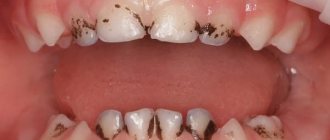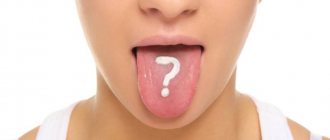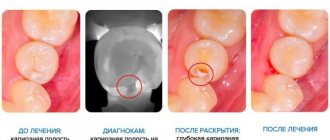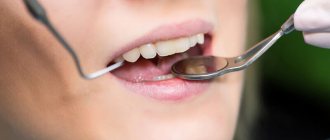Heavy smokers always have a yellow or brown tint to their enamel. This violates the overall aesthetics and makes you think about how to remove plaque on teeth after smoking and whether this can be done at home. Any dental plaque is a source of infection that can spread to nearby tissues. Therefore, you should treat cigarette residue responsibly and use all possible ways to eliminate it.
Ideally, it is better to quit smoking. Nicotine, tar and other chemical compounds negatively affect the health of the oral cavity and respiratory system, and increase the risk of developing severe infectious diseases. But not everyone can give up years of smoking. In this case, it is important to regularly visit the dentist and use methods that allow you to remove plaque on your teeth after smoking without harm to your health.
How does smoking affect teeth?
Smoking is a bad habit that negatively affects the overall condition of the oral cavity and dental health. When regularly exposed to tobacco smoke, they acquire a yellow coating and look unattractive. The reason for this is the harmful substances that are part of the smoke - ammonia, tar, nicotine, tar, phenol-formaldehyde, etc. There are about 3,000 substances in total, some of which settle on the enamel and form a characteristic plaque from cigarettes.
Smokers who take good care of their mouths and brush their teeth thoroughly have little plaque buildup. But they also cannot get rid of old deposits that form in hard-to-reach places. Sooner or later, they cease to be just a cosmetic problem and become the cause of dental pathologies.
Absolutely every smoker experiences xerostomia - a kind of dry mouth, indicating an insufficient amount of saliva, which causes a disruption in the natural protective functions of the oral cavity. The result is that plaque very quickly forms on the surface of the teeth, which serves as a breeding ground for pathogenic microorganisms, the waste products of which provoke the appearance of caries and gingivitis.
If a person cannot give up his addiction, then he should regularly remove the plaque that has formed on his teeth from smoking. Otherwise, the development of complications cannot be avoided.
How to remove plaque in the dentist's office?
The dentist has many effective ways to remove plaque from smoking. Many people believe that they need to whiten their teeth right away. But first, the doctor will offer you professional hygiene, which necessarily includes plaque removal using ultrasound or an Air-flow device. It is designed to remove soft microbial plaque and tartar using a mixture of abrasive, oxygen and water. This composition knocks down deposits on the enamel, polishes it and helps prevent the development of caries and other infectious and inflammatory diseases.
And only after the stone has been removed can teeth whitening be carried out. This will be the final stage of getting rid of yellow or brown plaque, which is particularly corrosive.
There are several ways to professionally whiten teeth while smoking:
- the use of laser systems to lighten enamel;
- trays with whitening gel for office and home use;
- ZOOM teeth whitening using a special gel and LED lamp.
You can consolidate the result with the help of professional whitening pastes. In the first days after enamel lightening, it is prohibited to consume coloring foods and drinks: coffee, strong tea, wine, beets, sweet carbonated drinks.
It is also recommended to pay increased attention to the quality of personal hygiene. If you brush your teeth poorly, neglect flossing, irrigators, and rinses, then if you smoke, the whitening effect will last only for a few months.
Methods for whitening teeth while smoking at home
If you are unable or unwilling to visit a dentist, you can get rid of plaque from smoking using home methods. But their effectiveness is much lower than professional methods of whitening and removing plaque.
Basic rules and methods for removing smoker’s plaque from teeth:
- If the enamel color is yellow or brown, but there is no solid stone, you can use special home systems to lighten the enamel. They must be applied with a brush or placed in a tray. They decompose the coloring pigment. But if used incorrectly, they can cause irritation of the gums and increased sensitivity of the enamel.
- As an alternative to whitening trays, lightening strips are used. Most often they are used to whiten teeth that are part of the smile area.
- A proven and affordable option for gradually lightening enamel is brushing your teeth with soda. It acts as a soft abrasive and removes not only microbial film, but also dense plaque. Baking soda can be added to toothpaste or used in its pure form. The duration of such bleaching is no more than 7-17 days (no more than 2-3 times a week). If tooth sensitivity increases while using baking soda, you should stop using it.
- Teeth whitening with lemon juice. This method is quite aggressive, as it causes increased sensitivity of the enamel in many people. Lemon juice is applied to the brush with toothpaste in a small amount.
- Use of activated carbon. The method is effective for minor yellowing of the enamel. Activated carbon needs to be turned into powder and used to brush your teeth.
- Use of hydrogen peroxide. The product can be used as a home antiseptic. Peroxide contains atomic oxygen, which effectively destroys pathogenic microorganisms and suppresses the growth of unhealthy microflora.
- Removing plaque after smoking with tea tree oil. It has antiseptic and light whitening properties. Tea tree oil does not irritate the oral mucosa and has a negative effect on cariogenic microorganisms.
To reduce the rate of plaque formation when smoking, it is recommended to brush your teeth or use mouthwash immediately after smoking a cigarette. This will remove most of the tar and nicotine that form the corrosive yellow and brown plaque on the teeth.
Detailed description of teeth whitening with soda
To whiten your teeth by smoking you will need a small amount of baking soda, toothpaste, a toothbrush and some water. You can use several options for lightening the enamel. The first of them involves treating the teeth with a damp brush and dry soda. The second option requires you to first wet the brush and mix baking soda with a small amount of water to a paste-like mixture. This composition is what you need to brush your teeth with.
Contraindications for home enamel lightening using soda:
- increased sensitivity of teeth;
- bleeding gums;
- pronounced carious process;
- exacerbation of any infectious and inflammatory diseases of the oral cavity;
- enamel hypoplasia.
Baking soda can be used to maintain the whitening effect after professional dental procedures. But remember the contraindications and the importance of taking breaks in use. You should not brush your teeth with baking soda every day because of the risk of damaging your teeth and causing inflammation of your gums.
Prevention
If the predisposing factors are not eliminated and the quality of oral care is not improved, plaque from smoking will form again and again. Prevention should be regular. At the initial stage, plaque is soft and can be easily removed with a toothbrush and paste. But over time, it hardens and turns into stone, which cannot be removed at home. The more plaque there is, the higher the risk of developing caries and other dental diseases.
Try to reduce the number of cigarettes you smoke.
You can completely give up a bad habit only gradually, after realizing the harmful effects of smoking on the body. If you have complaints about your oral health, contact your dentist in a timely manner and treat any identified pathologies. This will allow you to keep your teeth beautiful for a long time without resorting to prosthetics and implantation. To get a consultation
Signs of a smoker's plaque
Signs of this unpleasant phenomenon are visible to the naked eye. If desired, every smoker can detect them. To do this, just carefully examine your mouth and teeth in front of the mirror. In this case, the following symptoms of the problem may be observed.
- Visible change in enamel color towards darkening.
- The presence of yellow, brown or black plaque on the neck of the tooth (at the base) or on the inside of the dentition.
- Uncharacteristic color of gums, which look a little “overdried.”
After detecting these signs, all that remains is to exhale sharply into your palm to feel the bad breath - the eternal companion of heavy smokers.
The presence of one or more signs of cigarette plaque is a serious reason to contact specialized specialists - dentists.
Effect on tissue regeneration
Tobacco smoke slows down tissue healing.
Is it possible to smoke after tooth extraction? This question is asked quite often in dental offices.
The answer is much more obvious and not rhetorical - after treatment of teeth or gums, tobacco smoke will not bring any benefit and will negatively affect wound healing. This is explained by vasospasm, so a decrease in blood in the tissue interferes with its regeneration; in addition, dryness cannot be beneficial for delicate mucous membranes.
Dentists advise refraining from smoking after tooth extraction or gum surgery. Otherwise, the likelihood of developing alveolitis increases.
Tobacco smoke negatively affects the formation of a blood clot that forms at the site of the removed tissue, which protects the bone and nerves from infection by pathogens. If this happens, the patient will complain of severe pain, unpleasant smell and taste in the mouth.
The negative effects of tobacco smoke are reversible, but this takes many years. According to doctors, only after ten years can we talk about reducing the risk of developing cancer to the level of a person who has never smoked.
Professional teeth cleaning from plaque
At the Dental Center on Shabolovka, professional teeth cleaning is carried out to effectively remove smoker’s plaque. To do this, one of the modern methods of teeth cleaning can be used.
- Mechanical cleaning
- the procedure is carried out manually, using ultrasound or Air-Flow and is reduced to the mechanical destruction of plaque and stone. - Chemical cleaning
is a procedure that involves the application of special dental solutions that soften and break down plaque and tartar, allowing them to be removed from the surface of the teeth. - A combined method
is a procedure that includes chemical and mechanical cleaning of teeth, thanks to which you can achieve the best visible result.
Once the smoker's plaque has been removed, the dentist will grind and polish the surface of the teeth, which will significantly reduce the rate at which the problem reappears.
Important to remember!
The popular teeth whitening procedure is carried out only after professional cleaning.
Types of raid
Plaque formation is a normal process that occurs constantly. At the first stage, it even performs protective functions, protecting the enamel from external factors.
White plaque is a thin film that appears within a couple of hours after brushing your teeth. If we maintain hygiene and do not give up solid food - carrots, strong apples, crackers - part of the plaque is cleaned off. What remains is the one that got into the interdental spaces.
You can remove it with floss at home. If this is not done, it gradually hardens, mineralizes, turning into tartar. It is impossible to whiten teeth with such deposits at home. Requires professional cleaning. Smokers' teeth are particularly susceptible to becoming overgrown with such fossils.
Signs and consequences of a raid
Plaque does not always have a white tint. Color varies depending on circumstances. Let's see what plaque happens and why it occurs:
- Yellow. The color is due to frequent consumption of sweets. Microparticles of food penetrate deep into the white plaque and change its hue. Those who love buns and sweets often experience such a raid. Cigarettes have the same effect: the smoker’s teeth are almost always yellow. Lovers of strong coffee and steeply brewed black tea also often suffer from such a raid.
- Grey. The reason is enamel hypoplasia. The disease needs to be treated by a dentist. It is easy to deal with it using modern methods.
- Brown. This color is worn by experienced smokers. First, a yellow film appears on the crowns, then it darkens. The result: a permanent, dark-colored coating that can only be removed with hygienic cleaning and bleaching. Another reason for brown plaque is metabolic diseases and gastrointestinal tract diseases. Sometimes the crowns that cover dilapidated teeth are made with an admixture of copper - then the plaque takes on a brownish tint.
- Green. This color is possible for children. Sometimes adults also suffer due to the destruction of enamel.
- Black. With such a plaque, doctors recommend checking the condition of the biliary tract, and also eliminating the presence of parasites in the body. Plaque is removed in the dentist's office.
Whatever the color of the plaque, if it is not removed, it will mineralize. After 10 days it is already hard tartar. Whitening pastes and other home remedies will not cope with it.
There are 2 types of stone:
- supragingival (in open areas of teeth);
- subgingival (in the pocket, on the neck of the tooth).
Fresh supragingival plaque can be removed with a toothbrush, but subgingival plaque can only be cleaned using professional treatment methods.
Removing smoker's plaque at home
Most smokers are confident that they can get rid of yellow plaque on their teeth without visiting a dentist. To do this, it is enough to purchase one of the “newfangled” whitening products or a special toothpaste. At the same time, they completely do not take into account the peculiarities of the use of these funds and their conditionally positive effect.
The problem is that all home teeth whitening products are effective only in cases of minor plaque and have no effect on old deposits, especially if they are located in hard-to-reach places. Ideally, they should be used after professional cleaning to maintain the achieved result. This must be done with great care, since the active components and abrasive substances they contain have a destructive effect on tooth enamel.
Photos of plaque from smokers
If you are still tormented by doubts about quitting smoking or allowing yourself to calm your nerves in this way, take a look at the photo: here is an image of the teeth of a smoker.
Smoker's teeth
Impressive? Do you really want to have teeth of the same “pleasant” dark brown shade?
Plaque on the teeth of a cigarette lover
Removing plaque using folk remedies
Traditional medicine does not stand aside from dental problems. And to eliminate smoker’s plaque, she suggests using the well-known baking soda. To do this, you need to mix it with tooth powder or toothpaste and clean your teeth very thoroughly with this mixture. But it must be taken into account that this mixture can be used no more than 2 times a week, which is clearly not enough to remove cigarette stains. Otherwise, baking soda will gradually soften tooth enamel and negatively affect the condition of your gums. Often after such an “execution” there appears profuse bleeding of the gums and increased sensitivity of the enamel, which begins to react painfully to “cold” and “hot”.
There is also a safer method of traditional medicine that allows you to remove smoker’s plaque. To do this, immediately after smoking a cigarette, you need to chew a slice of lemon, green apple or strawberry for a long time. The fruit acids contained in these products will prevent plaque formation. But at the same time, they have a destructive effect on tooth enamel and cause its gradual thinning. And it is unlikely that any smoker will decide to undertake such a complex “ritual” after each cigarette smoked.
Clinical trials
Clinical studies have proven that regular use of professional toothpaste ASEPTA COFFEE AND TOBACCO for a month improved the hydration of the mucous membrane by 3.3 times, the remineralizing efficiency increased by 3.9 times, at the same time, the cleansing effect has increasing dynamics and reaches 60 .5% at 4 weeks of use.
Sources:
- Report on determining/confirming the preventive properties of toothpaste “ASEPTA PLUS” COFFEE and TOBACCO Author: doctor-researcher A.A. Leontyev, head Department of Preventive Dentistry, Doctor of Medical Sciences, Professor S.B. Ulitovsky. First St. Petersburg State Medical University named after. acad. I.P. Pavlova, Department of Preventive Dentistry
- Report on determining/confirming the preventive properties of toothpaste “ASEPTA PLUS” GENTLE WHITENING” Author: doctor-researcher A.A. Leontyev, head Department of Preventive Dentistry, Doctor of Medical Sciences, Professor S.B. Ulitovsky First St. Petersburg State Medical University named after. acad. I.P. Pavlova, Department of Preventive Dentistry
- Clinical and laboratory assessment of the influence of domestic therapeutic and prophylactic toothpaste based on plant extracts on the condition of the oral cavity in patients with simple marginal gingivitis. Doctor of Medical Sciences, Professor Elovikova T.M.1, Candidate of Chemical Sciences, Associate Professor Ermishina E.Yu. 2, Doctor of Technical Sciences Associate Professor Belokonova N.A. 2 Department of Therapeutic Dentistry USMU1, Department of General Chemistry USMU2
- Report on the determination/confirmation of the preventive properties of personal oral hygiene products “ASEPTA PLUS” Remineralization doctor-researcher A.A. Leontyev, head Department of Preventive Dentistry, Doctor of Medical Sciences, Professor S.B. Ulitovsky First St. Petersburg State Medical University named after. acad. I.P. Pavlova, Department of Preventive Dentistry
- Clinical studies of antisensitive toothpaste “Asepta Sensitive” (A.A. Leontyev, O.V. Kalinina, S.B. Ulitovsky) A.A. LEONTIEV, dentist O.V. KALININA, dentist S.B. ULITOVSKY, Doctor of Medical Sciences, Prof. Department of Therapeutic Dentistry, St. Petersburg State Medical University named after. acad. I.P. Pavlova
- The role of anti-inflammatory rinse in the treatment of periodontal diseases (L.Yu. Orekhova, A.A. Leontyev, S.B. Ulitovsky) L.Yu. OREKHOVA, Doctor of Medical Sciences, Prof., Head of Department; A.A. LEONTIEV, dentist; S.B. ULITOVSKY, Doctor of Medical Sciences, Prof. Department of Therapeutic Dentistry of St. Petersburg State Medical University named after. acad. I. P. Pavlova
The danger of untimely treatment and plaque removal
The appearance of cigarette residue cannot be ignored! Especially if it is accompanied by gingivitis, bad breath and bleeding gums. Failure to promptly seek help and remove plaque will lead to the progression of gingivitis, which will cause periodontal disease - periodontitis. In turn, periodontitis is accompanied by mobility of the dentition, which can ultimately result in tooth loss.
We should not forget about such a dental problem as caries, the main reason for the development of which is dental plaque. The pathogenic microorganisms that “live” in it, day after day, destroy not only the enamel, but also the hard tissues of the tooth, which will ultimately lead to its loss.
Prevention
Some people think that they can prevent plaque by brushing their teeth after smoking or by occasionally whitening them with home remedies.
Such methods cannot be considered reliable prevention: the smoker’s plaque will still remain and can only be removed by whitening in the dentist’s office.
What about electronic cigarettes? Perhaps it makes sense to switch to them? Indeed, if you do not smoke, but vape, the harmful effects of combustion products are eliminated. But, firstly, electronic cigarettes still emit dangerous substances, and secondly, hot steam passed through teeth destroys the enamel. You won’t see any pronounced plaque, but there’s no benefit to your teeth either.
Toothpastes for smokers
Cosmetologists call the change in a patient’s appearance due to smoking “tobacco transformation.”
There is another type of paste, which contains atomic oxygen and pyroxides. They make the enamel looser. This is necessary for the penetration of oxygen, which oxidizes yellow pigments. This is how teeth become whiter. But it should be remembered that the loose structure is more susceptible to the penetration of dyes, and after a while the teeth may become even yellower.
General recommendations
To keep your teeth white and healthy, you not only need to whiten periodically, but also follow these rules:
- brush your teeth at least 2 times a day, thoroughly cleaning all surfaces of the teeth and spending at least 5 minutes on the procedure;
- use medicated paste constantly and periodically alternating it with a special whitening paste - we brush our teeth with a regular paste for 3 months and with a special whitening paste for 1 month;
- limit the consumption of strong tea, coffee, carbonated drinks and other products that stain tooth enamel;
- reduce consumption of foods containing high concentrations of sugar;
- give up smoking - only by completely giving up smoking can you achieve whiter teeth, otherwise you will have to carry out whitening constantly, and the result will get worse every year.










